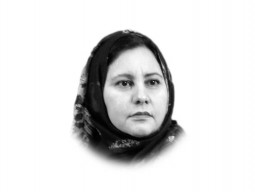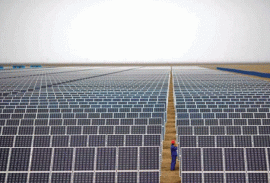
Protests turn violent and step into a space that does not belong to the original idea that lent itself for agitation. When India’s protesting farmers marched into Delhi on tractors, they probably had no clue that this particular demonstration would turn into a communal event. A handful of Sikh protesters defying the police crackdown climbed up the Red Fort and hoisted the Khalistan flag. In an instance, the focus of the protest, surrounding the proposed agricultural laws inimical to the farmers, turned towards the Sikh separatist movement, the Khalistan movement. It was not the first time that the Khalistan flag was hoisted. Last year in August, in the Monga district of Indian Punjab, a similar act was done. However, coinciding Khalistan flag hoisting with India’s Republic Day has given this particular incident a marginal utility. Three scenarios have since emerged to understand this act.
One group called it the Indian government’s handiwork to politicise the movement and split the farmers, who had remained peaceful since the beginning of the agitation in November.
The second group calls it the work of the “spoilers” who had tried to take advantage of the vulnerable moment to register their grievances.
A third group that forms the Indian media has thrown the ball in Pakistan’s court with an accusation that the Khalistan terrorists were planted to widen the rift between the government and the farmers and make matters worse.
The probability of all these scenarios being right is as high as the probability of them being false and conspiratorial. Unless we have evidence-based credible proof, no one can be accused in this regard. So far the protesting farmers have distanced themselves from the miscreant, which means the movement is still intact and is not going away despite the momentary lull in Delhi and elsewhere after January 26.
What are the laws in question all about?
The significance of the laws lies in changing the regulatory framework to discontinue the state’s intervention in the agriculture market. Under the new law, farmers could directly sell their products to the sellers with no restrains on the movement and distribution of products.
What are the apprehensions of the farmers?
The farmers fear that the principle of demand and supply, resulting in a deregulated and a price fluctuating market, would only benefit big agriculturists and the giant wholesalers, eroding the profit margin of small farmers who constitute 85% of India’s farming community.
Is this all about the ongoing protest and agitation?
While economists acknowledge that India’s farming sector deserves reform, the ongoing protest seems to have emanated from the BJP’s style of circumventing the consultative process and taking unilateral decisions on matters of public interest. Whether it was the abrogation of Kashmir’s status, the introduction of the Citizen Amendment Act (CAA), the creation of the National Register of Citizens, the failed policy of demonetisation in 2016, or the abrupt nationwide lockdown leading to the massive internal displacement of people, the Modi government has shown a complete disregard to the stakeholders’ sentiments and opinion.
Almost all of these policy initiatives triggered public uproar culminating in violent protests. The CAA protest drew international ire when the Delhi police were given a freehand to quash dissent putting the lives and limbs of thousands of students and teachers in danger. India had been criticised in equal measure on Kashmir. From the United Nations to the US Congress to the parliamentarians in the British Parliament, India has been flayed for its indifference to the Kashmiris’ legal rights. Even on the farmer’s issue, a row had erupted between India and Canada when Prime Minister Justin Trudeau supported the farmers’ stance.
If there is any significance or lesson in Trump’s unceremonious departure from the Whitehouse, it is the value of consensus. Irrespective of their power, leaders are supposed to listen to the voices raised in streets, from the opposition, in the corridors of the judiciary and other administrative units. It cannot be government versus the rest. It can only be government and the rest — together. Discussion and deliberation are constitutional rights of the citizens that cannot be wilfully eroded in the name of nationalism or religious fervour. From this perspective, the hoisting of the Khalistan flag can be interpreted as a gesture to the shrinking consultative space for the minorities in India —Sikhs being one of them.
There is a lesson in this for Pakistan as well. Our Prime Minister, Imran Khan, has been loath to talk to the opposition for the only reason that they were corrupt and had cheated on their vote bank. Other than paralysing the parliament, killing the process of political consultation, generating a general atmosphere of intolerance, the absence of dialogue has locked the government in a vicious circle of self-appeasement and irregular governance.
Nothing is more inimical to liberal democracy than closing the door to discussion, free debate and a differing perspective.
Published in The Express Tribune, January 29th, 2021.
Like Opinion & Editorial on Facebook, follow @ETOpEd on Twitter to receive all updates on all our daily pieces.

1736585048-0/Untitled-design-(1)1736585048-0-405x300.webp)
1736582706-0/fizza-(2)1736582706-0-165x106.webp)
1736579961-0/fizza-(1)1736579961-0-165x106.webp)




1729685382-0/Untitled-design-(57)1729685382-0-270x192.webp)




1736508423-0/Express-Tribune---News-Desk-(9)1736508423-0-270x192.webp)







COMMENTS
Comments are moderated and generally will be posted if they are on-topic and not abusive.
For more information, please see our Comments FAQ